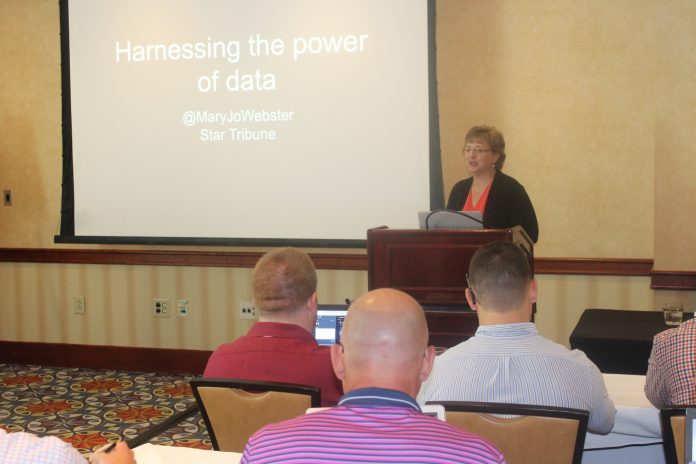By Prince Robinson
ATLANTA — Data can tell us the who, what, when, where and how.
Star Tribune (Minneapolis) data editor MaryJo Webster gave a presentation on how to use numbers and trends to explain the why during the “Harnessing The Power of Data” workshop at the 2019 APSE Summer Conference on Monday.
Webster says that good data goes further than just stats and power rankings.
“Good data incorporates rows and columns,” she said. “Good data is structured, which allows you to do more things with it. The more info in the data, the more questions you can ask.”
Webster displayed the 26-man Minnesota Twins roster salary sheet from 2011. The spreadsheet showed catcher Joe Mauer was tops in pay with $23 million and pitcher Jeff Manship earned the least at $419,000. Webster noted that the chart showed the players’ salaries, but did not show “why” the players were compensated so handsomely.
Webster introduced sourcing, noting a data analysis can’t be done with one source.
“You cannot build a story on a single source,” she said. “The proper way to go about it is to form several sources that can justify the piece you’re trying to create.”
However, Webster said that each source has its limitations.
“All sources are limited about what they know and what they don’t know,” she said. “Data is a type of source, which can answer questions, raise questions, point you in the right direction and even sometimes point you in the wrong direction.”
Webster has 25 years of editor experience, with 20 in data editing.
Her secret to data analysis writing is to compile data every year.
“Start a database of things to follow at your respective newspapers,” she said. “As you continue, each year, it’ll get easier and easier. Soon, you’ll be able to generate stories based on your own findings.”
Webster talked about Star Tribune sports enterprise reporter Joe Christensen, who wrote about concussions in girls soccer. Christensen used Google forms to compile information, including name, age and the impact of the concussion.
Webster says the future of data journalism is bright.
“If you want to write a data story, you’re signing yourself up to prove or disprove a myth or theory,” she said. “Those stories will excite your audience. If you know how to use it: learn, do and then teach it to a young journalist.”





